I am planning on making a mid-century modern Newton’s cradle for my final project. I was initially inspired to work on this project while fiddling with some toys I have on my desk in my room. I was fidgeting with these toys while thinking of what I could make for my final project, and it seemed like the answer was in my hand. I always enjoyed desk toys, and a Newton’s cradle met the requirements for the project.
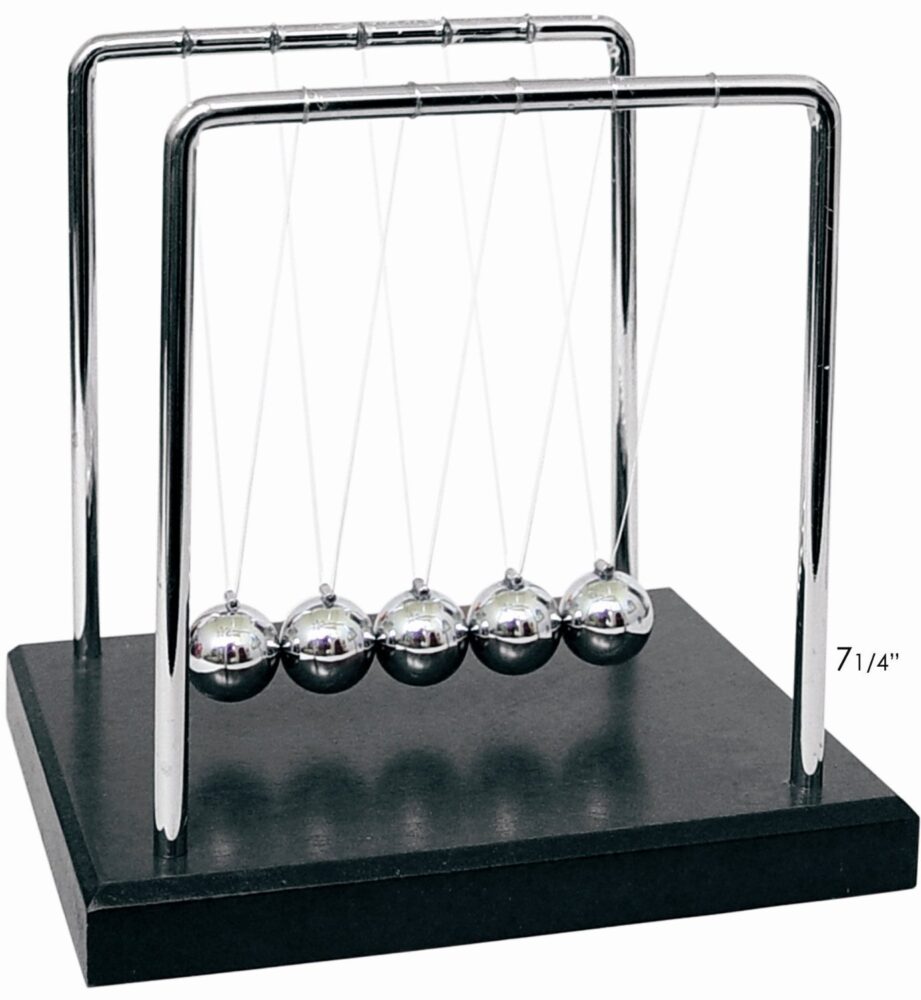
[1]
Once I settled on what I was going to create, I had to choose a desired aesthetic. My initial thought was to try and capture the maximalist aesthetic. This aesthetic is characterized by making an item unnaturally large such that it fills a large region of space and demands visual attention. I thought it would be cool to make a large wooden support structure that held up a few bowling balls with chains. This setup would allow for a very grandiose representation of Newton’s laws. I could imagine a Newton’s cradle of this design being used by an entertaining Physics 1 professor in lectures.
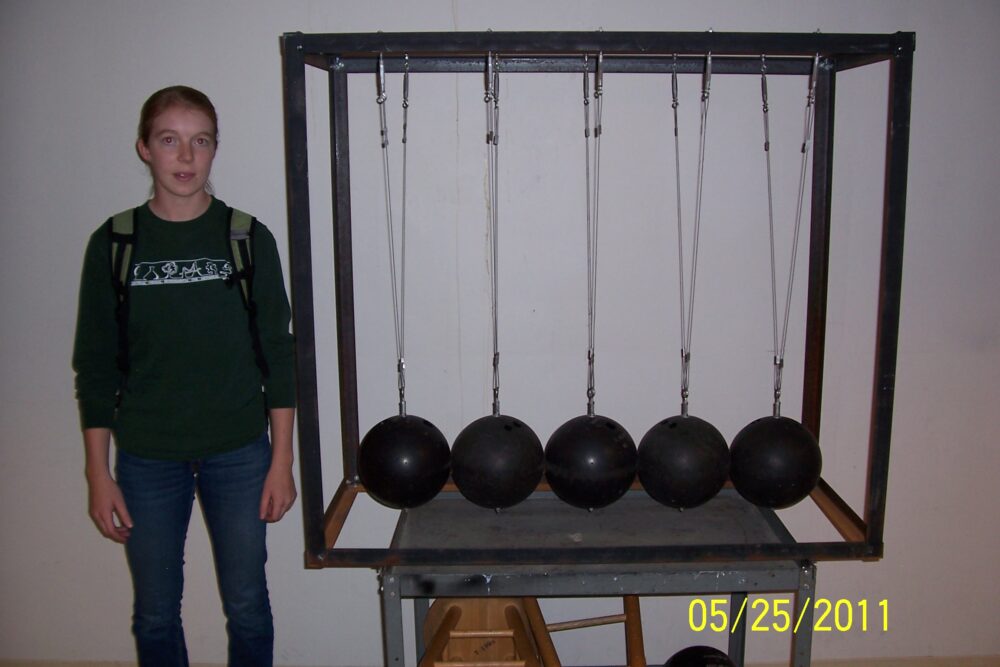
[2]
However, I learned from my upcycle project that choosing the desired aesthetic based on what materials I have available is a good way to approach the aesthetic selection process. I was unable to achieve my desired speakeasy aesthetic with my upcycle project because I had issues sourcing the proper lamp shade. Therefore, I decided to move away from the maximalist aesthetic and settle on a more feasible design. I began thinking about what my personal favorite aesthetic is. I figured that I would be more likely to use my creation if it was something that I would keep out on my desk.
I am drawn most towards the mid-century modern aesthetic since it brings with it a sense of cleanliness and functionality while maintaining a level of simplicity that can be achieved without very specific materials. I am an extremely organized person who functions best when a level of order in my life is maintained. The straight lines and natural color palette of mid-century modern designs matches well with this aspect of my personality, and I would really like to incorporate it into my final project.
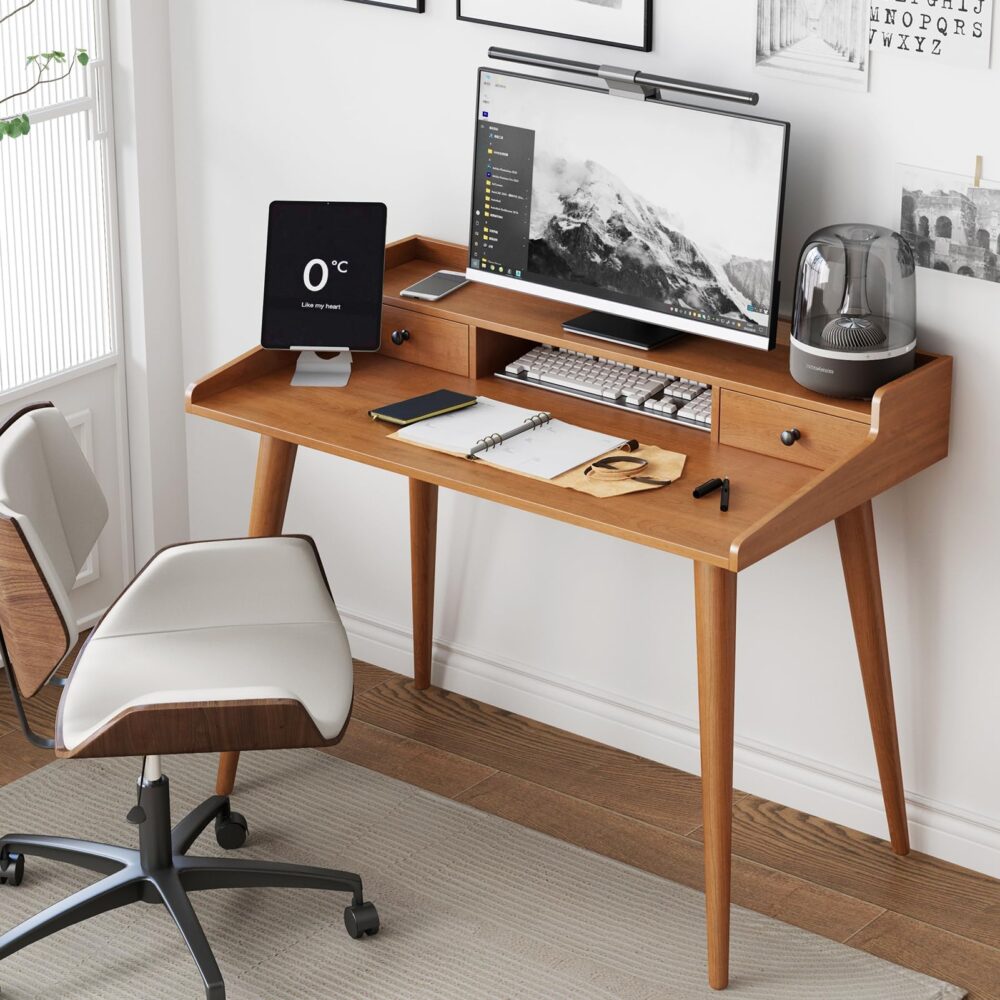
[3]
The mid-century modern aesthetic has a few defining characteristics such as clean lines, organic forms, the use of natural wood, and achieving a high level of functionality. The Herman Miller Eames Lounge Chair is a classic example of these aspects in a real world design. Designing a chair may seem simple at first glance, but it proves to be one of the hardest design tasks because it is so reliant on varying human body types and functionality. They are not just decorative objects. Designers must take into account stability, comfort, and ergonomics as well as a visually pleasing aesthetic. The Eames chair is quite possibly the most famous chair design, and it is a staple of mid-century modern design.

[4]
I am looking to capture these same design aspects in my Newton’s cradle. I plan on achieving clean lines in the wooden base and the support beams. These are the main features of the toy, and I want them to be defined by straight edges. I plan on cutting the wood with a table saw and sanding down the edges to obtain the simple look I find appealing. For the beams, I am currently planning on having wooden vertical supports with a horizontal aluminum rod run across the top.
The cradle will also embody organic forms with the balls used. I plan on using steel ball bearings since they do not deform under collisions. It is important that the kinetic energy of my system is transferred quickly through a rigid ball to avoid elastic collisions. This will allow the path of the balls to sway in an organic manner defined by the simple physics of the system.
The cradle will also utilize wood as a major material. The wood’s natural grain and warmth perfectly embodies the mid-century modern aesthetic and emphasizes a sense of natural connection in urban environments. This provides a nice contrast to the colder and more industrial materials that are prevalent in other aesthetics I do not enjoy as much.
The cradle will hopefully provide a high sense of functionality. In order for the cradle to work best, it must allow for the most inelastic collision between the balls as possible. There are a few ways to help improve this in the design. For one, I am using steel ball bearings. These are good since they are heavy, durable, and have a high modulus of elasticity. Secondly, I am giving the cradle a strong support structure. The wooden beams and aluminum crossbars will allow the balls to swing without swaying the entire frame. Lastly, the strings will be fine tuned. I will make sure the length and spacing of the strings is such that the balls just barely make contact with each other while hanging before super gluing them into place. I will also be using a strong enough fishing line such that they will not stretch or fray over time.
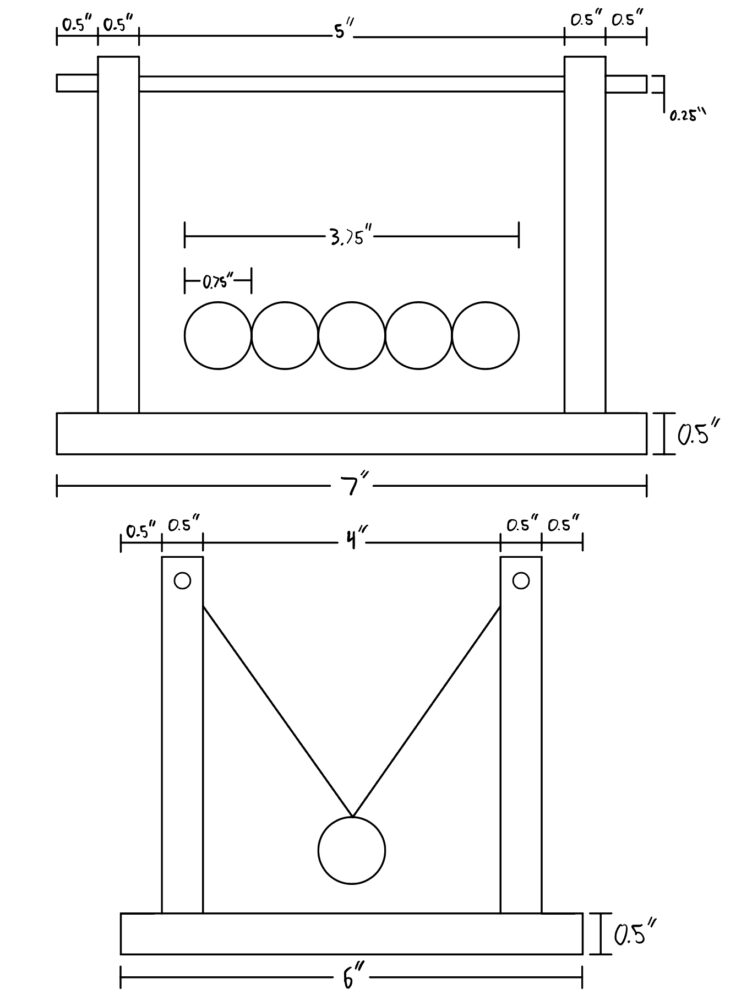
My Newton’s cradle should be fairly straight forward to manufacture. The first step of the process will be obtaining materials. I need to get wood, sandpaper, a wood stain, wood screws, aluminum rods, steel ball bearings, fishing line, paper clips, and super glue. I should be able to source the steel ball bearings and aluminum rods online. I will talk to my pod members and Josh in the Idea Forge woodshop about where to obtain a good looking wood and stain for the project. I can get the fishing line, paper clips, and super glue by making a run to Home Depot and Walmart.
As far as the actual manufacturing goes, I will need to cut the aluminum rods to length in the machine shop. Then I will need to cut all the wood pieces to size and sand them down in the woodshop. Then I will have to assemble the support frame using the wood screws. After that, I can stain the wood. While the stain is drying, I can bend the paper clips to create eyelets that can be adhered to the ball bearings with super glue. Finally, I can run wire through each eyelet and make sure the balls are all tied in place before tapping super glue on the knots to secure their connection. I should not have to learn anything very new to me during this process. I wish I was more accustomed to working in the machine shop, but this project is pretty straight forward and only requires me to use their saws to cut an aluminum rod.
I have gone ahead and planned this project out over the next few weeks. I had to schedule around me leaving for Spring Break and to go see the total solar eclipse.
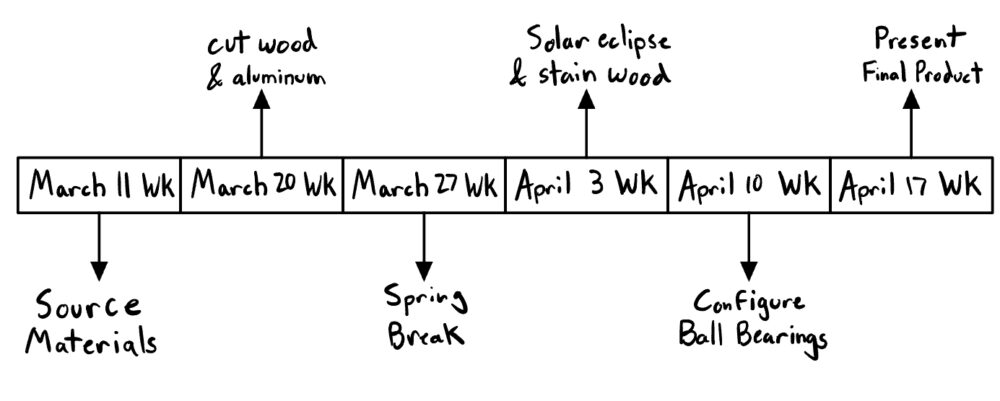
Overall, I am very excited to jump into the project. I am sure that I will hit a few setbacks, but it is hard to imagine that they will be too major. I am most excited to play with the final product and have a real sense of accomplishment for making something that brings me so much joy.
Sources:
[1] Amazon.Com: Powertrc Newtons Cradle Balance Balls 7 1/4″ | Science …, www.amazon.com/PowerTRC-Newtons-Cradle-Balance-Balls/dp/B00ZJH3ZP6. Accessed 13 Mar. 2024. [2] Jcbreit. “Giant Newton’s Cradle.” Department of Physics | CSU, Department of Physics | CSU, 9 July 2021, www.physics.colostate.edu/physics-demos/giant-newtons-cradle/. [3] Amazon.Com: Ucerna Mid Century Modern Desk, 43″ Wood Home Office …, www.amazon.com/Ucerna-Century-Writing-Computer-Monitor/dp/B0C6LGPH3L. Accessed 13 Mar. 2024. [4] Wormald, James. “The Eames Lounge Chair: How A Design Classic Was Made.” Architonic, Architonic, 9 May 2022, www.architonic.com/en/story/james-wormald-the-eames-lounge-chair-how-a-design-classic-was-made/20262196.

3 Comments. Leave new
[…] a harmonious bedroom space infused with mid-century modern aesthetics requires careful selection of art and decor elements. Start by introducing pieces that echo the warm tones and organic forms […]
Hey Oliver, I love your idea to make newtons cradle and I think your mid century aesthetic would look really cool. I’m used to seeing these in an industrial or modern-looking aesthetic so I am very interested in how yours will end up looking. Also, great work on your sketches, and its nice that most of your materials will be very easy to attain at local stores.
Hey Oliver! I love that you included the solar eclipse on your timeline! Bonding the paperclips to the ball bearings is good thinking.